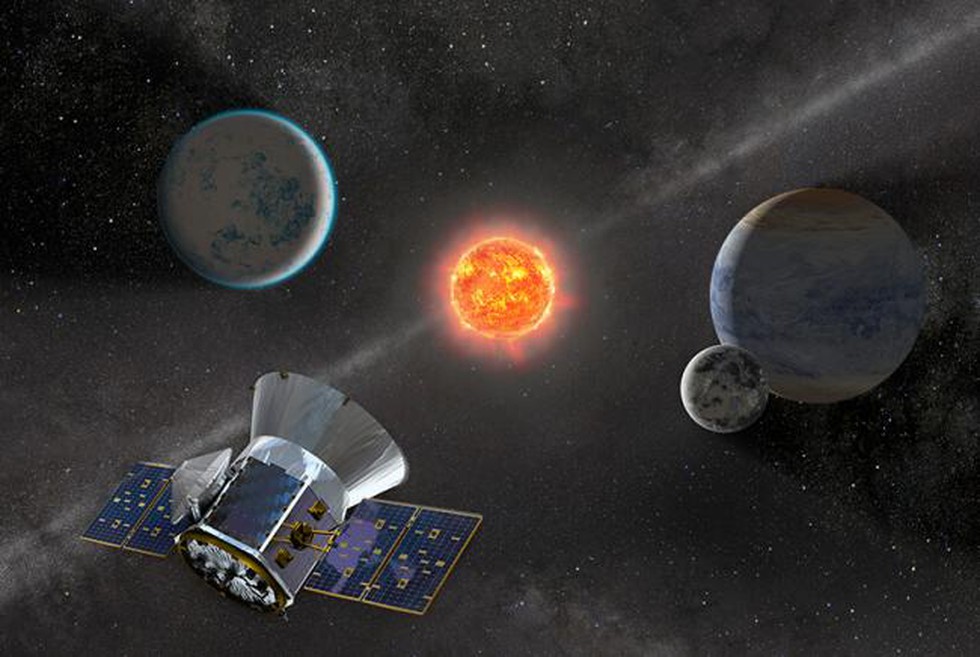
Transiting Exoplanet Survey Satellite (TESS)

05.04.2025
Transiting Exoplanet Survey Satellite (TESS)
|
For Prelims: About Transiting Exoplanet Survey Satellite (TESS) |
Why in the news?
Using the Transiting Exoplanet Survey Satellite (TESS), an international team of astronomers recently detected a new warm Jupiter exoplanet located more than 1,000 light years away.
About Transiting Exoplanet Survey Satellite (TESS):
- TESS is a NASA mission that was launched in March 2018.
- It is a small space telescope designed to discover thousands of exoplanets in orbit around the brightest dwarf stars in the sky.
- It is a follow-up to NASA's highly successful Kepler space telescope, which found thousands of exoplanets during a decade of work after its launch in 2009.
- In its prime mission, a two-year survey of the solar neighborhood, TESS monitored the brightness of stars for periodic drops caused by planet transits.
- This method reveals the diameter of the planet and the size of its orbit.
- Orbits within a certain range lie in the “habitable zone”, where liquid water can exist on the surface of an Earth-like world.
- The prime mission ended on July 4, 2020, and TESS is now in an extended mission.
- TESS is finding planets ranging from small, rocky worlds to giant planets, showcasing the diversity of planets in the galaxy.
- TESS finished its primary mission by imaging about 75% of the starry sky as part of a two-year-long survey. In capturing this giant mosaic, TESS found 66 new exoplanets.
Source: The Hindu
What is the primary objective of NASA’s TESS Mission, recently seen in the news?
A.To explore asteroids in the Kuiper Belt.
B.To discover exoplanets around bright dwarf stars.
C.To analyze cosmic background radiation.
D.To study black holes.
Answer B